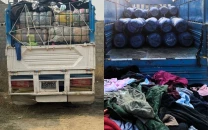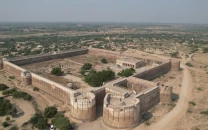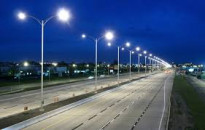Cyclone Ashoba
The tropical cyclone is forecast to make its impact along the coast of Sindh and Balochistan

People should follow the government’s ban on swimming in the sea instead of risking their lives. PHOTO: MOHAMMAD NOMAN/EXPRESS
The Provincial Disaster Management Authority needs to put in place an emergency exit strategy for the people living in coastal villages in Thatta, Badin, Sujawal and other adjoining areas. Sites need to be marked to relocate people in case rain damages their homes, and provisions need to be made for food arrangement. There is also a chance of a dengue epidemic from bodies of water that form after the cyclone. Even though the cyclone may not hit Karachi with the same intensity, experience shows that even light rainfall can cause significant damage to the city’s infrastructure. The electricity network fails and roads become inundated as stormwater drains are choked. Various government departments, such as the local government, the Karachi Metropolitan Corporation, the commissioner’s office and the electricity utility have issued press statements assuring that they are prepared to deal with the cyclone. Orders have been issued to take down billboards in case they are knocked over during a thunderstorm. Even the customary action of cancelling leaves of staff members has been carried out. However, only time will tell just how prepared these agencies are to deal with heavy rains.
Nevertheless, residents also need to take some precautionary measures ahead of the cyclone. The K-Electric advised people to refrain from parking their cars under pole-mounted transformers, trees or billboards, which may fall due to strong winds. People should follow the government’s ban on swimming in the sea instead of risking their lives.
Published in The Express Tribune, June 10th, 2015.
Like Opinion & Editorial on Facebook, follow @ETOpEd on Twitter to receive all updates on all our daily pieces.



















COMMENTS
Comments are moderated and generally will be posted if they are on-topic and not abusive.
For more information, please see our Comments FAQ